Housebreaking
Housebreaking In A Hurry
By Delores Burton—K9 Campus
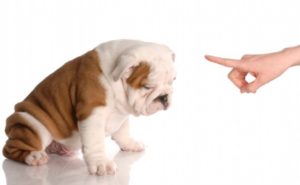 The frustration that an owner experiences when they are unable to housebreak their dog is the most common reason which causes dog owners to surrender their pet to animal shelters.
The frustration that an owner experiences when they are unable to housebreak their dog is the most common reason which causes dog owners to surrender their pet to animal shelters.
Reasons for soiling in the house could be: they are a puppy, there has been a change in their environment (a new baby, an outside visitor, a move to a new house), a change in their routine, a change in their diet, marking their territory, stress, undue excitement, age or health problems. If it is a health problem, see your vet.
With patience, motivation and consistency, housebreaking is possible. If you follow the instructions below, you will be successful
When to take your dog outside:
When he first wakes up
Right after eating or drinking and again 20 minutes to a 1/2 hour after eating or drinking
Right after play
Before going to bed
If he is circling, squatting, arching the back and/or arching the tail over the back
When he is sniffing
How to Take Your Dog Outside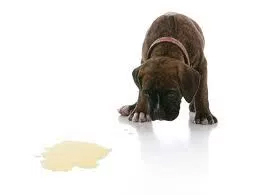
Use the same path or door when taking your dog outside.
Always take him to the same spot
Until he is 100%, always accompany your dog outside. Don’t just put him outside by himself.
Don’t distract your dog or play with him while you are outside. His sole purpose for being outside is to eliminate. Once he does, give him lots and lots of praise and immediately take him back inside.
Things Not to Do:
Do not make your dog’s kennel a prison.
Do not rub your dog’s face in his mess
Do not correct him after he has left the scene. If you punish your dog for soiling after he’s done the deed, he will not know what he is being punished for. As a matter of fact, it will just make your dog sneakier and he will soil when you are not looking.
Things to Do:
An ounce of prevention is worth more than a ton of correction.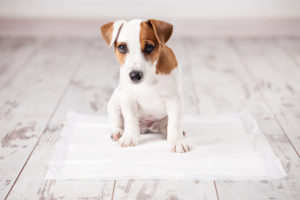
Anytime your dog is in the house with you, he needs to be watched like a hawk, or confined (i.e., the kennel). The speed for housebreaking varies. For a puppy over 12 weeks old–usually about 10 days to 2 weeks, depending on your diligence, consistency and motivation. Also consider your dog’s age, breed, temperament and history.
If your dog has an accident, you must catch him in the act. He must receive a negative correction every time he has an accident. The correction must be motivational and immediate. If he gets away with it just once, he will test you 3 or 4 times, or more before he believes you really mean it.
Buy and use an odor neutralizer, like Nature’s Miracle. Pet stores carry it. It has an enzyme that lifts the stain and also breaks down the residue to eliminate the odor, thereby eliminating the scent he has left previously. This will prevent him from wanting to go back to his “familiar place”.
Establish a place outside where the dog will go to eliminate.
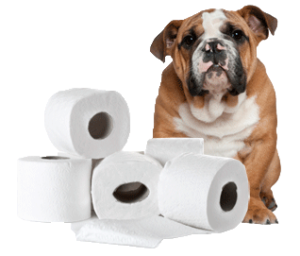
Set up a feeding and watering schedule for your dog that is rigorous and consistent. Make sure your dog gets fed the same time every day. Soon, you can predict when your dog will need to go out. If you don’t feed him on a consistent schedule, it will be a guessing game.
Restrict water before going to bed, just until he is reliable.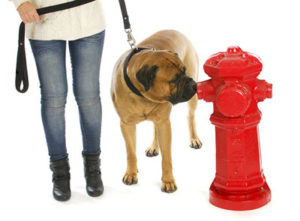
Sample Housebreaking Schedule
Home All Day
| 6:00 a.m. | Wake up and immediately take puppy out. Carrying the puppy may be necessary to insure that he can make it all the way to the potty area. If you don’t carry the puppy, make sure to put a leash on the puppy before you let him out of the crate. Go out the same door you always use. Give the puppy 5 minutes to “go”. After he goes, give him another 10 minutes. Remember to begin using the elimination cue word after a few days. Snce this is first thing in the morning, we are going to assume that the puppy does relieve himself (pee, poop). |
| 6:15-6:30 | Bring the puppy inside and since the puppy did go, give 10-30 minutes of monitered “free” time. Initially, “free time” means the owner is holding the leash and watching the puppy 100% of the time. When the puppy has some house manners, you can drop the leash when you are in the same room with the puppy. If you want to play with the puppy, it is best to go outside, or keep the play confined to one particular room. You should prepare the puppy’s food at this time. |
| 6:30-6:40 a.m. | Take the puppy out again. Whether or not he goes, bring the puppy in the house and get ready to feed him. If he didn’t go potty, feed the puppy in the crate or watch him very closely. |
| 6:40-6:45 a.m. | Feed the puppy. Giver him 10-20 minutes to eat and drink then pick up the food. Don’t allow the puppy to wander off. Take the puppy out the instant he f inishes eating or takes a break from eating. |
| 6:45-7:00 a.m. | The puppy will probably go. If he does, praise and bring him inside for 156-30 minutes of on-leash “free” time. Especially after eating, make sure to allow an extra 10 minutes outside if the puppy goes within the first 5 minutes. |
| 7:00-7:30 a.m. | Monitored “free” time. |
| 7:30-7:45 a.m. | Free time is over so tether the puppy or confine in kennel. Puppy lies down to watch you. |
| 7:45-8:00 a.m. | Puppy must be taken out because he got up from resting. |
| 8:00-8:30 a.m. | Free time for puppy because he went potty. Puppy drinks water. |
| 8:30-8:35 a.m. | Take puppy out. Puppy didn’t go. |
| 8:35-9:35 a.m. | Since puppy didn’t go, put in crate with chew toy. |
| 9:35-9:50 a.m. | Take puppy out. |
